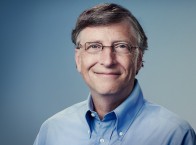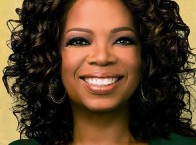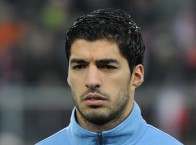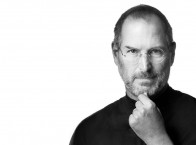Gabriel was an original lead singer and flautist of the progressive rock band Genesis. Learn 50 facts about life and career of Peter Gabriel.
1. His middle name is Brian.
2. He is an English singer-songwriter, musician and humanitarian activist.
3. Rose to fame as the original lead singer and flautist of the progressive rock band Genesis.
4. Left Genesis in 1975.
5. After leaving Genesis, Gabriel went on to a successful solo career, with "Solsbury Hill" his first single.
6. His 1986 album, So, is his most commercially successful, and is certified triple platinum in the UK and five times platinum in the U.S.
7. His solo album's biggest hit, "Sledgehammer", won a record nine MTV Awards at the 1987 MTV Video Music Awards, and it remains the most played music video in the history of MTV.
8. He co-founded the WOMAD festival in 1982.
9. He has continued to focus on producing and promoting world music through his Real World Records label.
10. He has also pioneered digital distribution methods for music, co-founding OD2, one of the first online music download services.
11. Gabriel has been involved in numerous humanitarian efforts. In 1980, he released the anti-apartheid single "Biko".
12. He has participated in several human rights benefit concerts, including Amnesty International's Human Rights Now! tour in 1988.
13. Co-founded the WITNESS human rights organisation in 1992.
14. Gabriel developed The Elders with Richard Branson, which was launched by Nelson Mandela in 2007.
15. Gabriel has won three Brit Awards-winning Best British Male in 1987.
16. Won six Grammy Awards.
17. Won thirteen MTV Video Music Awards, the first Pioneer Award at the BT Digital Music Awards, the Q magazine Lifetime Achievement, the Ivor Novello Award for Lifetime Achievement, and the Polar Music Prize.
18. He was made a BMI Icon at the 57th annual BMI London Awards for his "influence on generations of music makers".
19. In recognition of his many years of human rights activism, he received the Man of Peace award from the Nobel Peace Prize Laureates.
20. TIME magazine named Gabriel one of the 100 most influential people in the world.
21. AllMusic has described Gabriel as "one of rock's most ambitious, innovative musicians, as well as one of its most political".
22. He was inducted into the Rock and Roll Hall of Fame as a member of Genesis in 2010, followed by his induction as a solo artist in 2014.
23. Peter Brian Gabriel was born in Chobham, Surrey, England.
24. His father, Ralph Parton Gabriel, was an electrical engineer/
25. His mother, Edith Irene (Allen), who was from a musical family, taught him to play the piano at an early age.
26. His great-great-great-uncle, Sir Thomas Gabriel, 1st Baronet, served as Lord Mayor of London from 1866 to 1877.
27. He attended Cable House, a private, primary (pre-prep) school in Woking, Surrey, St. Andrews Prep School in Horsell, then Charterhouse School (Godalming) from 1963.
28. He played drums in his first rock bands, and Mike Rutherford commented in 1985 that "Pete was-and still is, I think-a frustrated drummer".
29. Gabriel founded Genesis in 1967 with fellow Charterhouse School pupils Tony Banks, Anthony Phillips, Mike Rutherford, and drummer Chris Stewart. The name of the band was suggested by fellow Charterhouse alumnus, the pop music impresario Jonathan King, who produced their first album, From Genesis to Revelation.
30. Gabriel has said to be influenced by many different sources in his way of singing, such as Family lead singer Roger Chapman.
31. In 1970, he played the flute on Cat Stevens's album, Mona Bone Jakon.
32. Genesis drew some attention in Britain and eventually also in Italy, Belgium, Germany and other European countries, largely due to Gabriel's flamboyant stage presence, which involved numerous bizarre costume changes and comical, dreamlike stories told as the introduction to each song (originally Gabriel developed these stories solely to cover the time between songs that the rest of the band would take tuning their instruments and fixing technical glitches). The concerts made extensive use of black light with the normal stage lighting subdued or off. A backdrop of fluorescent white sheets and a comparatively sparse stage made the band into a set of silhouettes, with Gabriel's fluorescent costume and make-up providing the only other sources of light.
33. In an episode of the 2007 British documentary series Seven Ages of Rock, Steve Hackett recalled the first appearance of Gabriel "in costume". It was the dress-wearing, fox-headed entity immortalised on the cover of Foxtrot. Hackett and the rest of the band had no inkling that Gabriel was going to do this, and at the time Hackett worried that it would ruin the performance. It was a success, encouraging Gabriel to continue wearing stage clothes while singing.
34. Among Gabriel's many famous costumes, which he developed to visualise the musical ideas of the band as well as to gain press coverage, were "Batwings" for the band's usual opening number, "Watcher of the Skies".
35. Gabriel left Genesis to pursue a film project with Friedkin, only to rejoin a week later. The decision to quit the band was made before the tour supporting The Lamb Lies Down on Broadway, with Gabriel explaining his decision to the band while keeping it from the press until the conclusion of that tour. Bassist Mike Rutherford recalled that they all "could see it coming". Although tensions were high, both Gabriel and the remaining members of Genesis have stated publicly that Gabriel left the band on good terms.
36. "Solsbury Hill", Gabriel's debut single as a solo artist, recorded in 1976 and appearing on the "Car" album in 1977, was written specifically about his departure from Genesis.
37. In 1982, Gabriel reunited with his former Genesis colleagues for the one-off concert Six of the Best, to recoup debts that arose from his nvolvement in the staging of the first WOMAD concert.
38. Gabriel did not title his first four solo albums, which were all labelled Peter Gabriel using the same typeface, but which featured different cover designs (by Hipgnosis); in all of these designs, Gabriel's face is wholly or partially obscured in some way. The albums are usually differentiated by number in order of release (I, II, III, IV), or by sleeve design, with the first three solo albums often referred to as Car, Scratch and Melt respectively, in reference to their cover artwork.
39. His fourth solo album, also called Peter Gabriel, was titled Security in the U.S. at the behest of Geffen Records.
40. For many years, Gabriel was managed by Gail Colson.
41. After acquiescing to distinctive titles, Gabriel used a series of two-letter words to title his next three albums: So, Us, and Up.
42. His greatest hits compilation is titled Hit; within the two-CD package, disc one is labelled "Hit" and disc two is labelled "Miss," an echo of the 1996 compilations by Joni Mitchell entitled Hits and Misses.
43. In 1986 he started what has become a longstanding association with Amnesty International, becoming a pioneering participant in all 28 of Amnesty's Human rights concerts - a series of music events and tours staged by the US Section of Amnesty International between 1986-1998.
44. He performed during the six-concert A Conspiracy of Hope US tour in June 1986; the twenty-concert Human Rights Now! world tour in 1988; the Chile: Embrace of Hope Concert in 1990 and at The Paris Concert For Amnesty International in 1998.
45. He also performed in Amnesty's Secret Policeman's Ball benefit shows in collaboration with other artists and friends such as Lou Reed, David Gilmour and Youssou N'Dour; Gabriel closed those concerts performing his anti-apartheid anthem "Biko".
46. Inspired by the social activism he encountered in his work with Amnesty, in 1992 Gabriel co-founded WITNESS, a non-profit organisation that equips, trains and supports locally based organisations worldwide to use video and the internet in human rights documentation and advocacy.
47. In 1995, Gabriel and Cape Verdean human rights activist Vera Duarte were awarded the North-South Prize in its inaugural year.
48. In November 2007 Gabriel's non-profit group WITNESS launched The Hub, a participatory media site for human rights.
49. In September 2008 Gabriel was named as the recipient of Amnesty International's 2008 Ambassador of Conscience Award.
50. Received Quadriga United We Care award of Werkstatt Deutschland along with Boris Tadić, Eckart Höfling and Wikipedia. The award was presented to him by Queen Silvia of Sweden.

 Share on Facebook
Share on Facebook





















